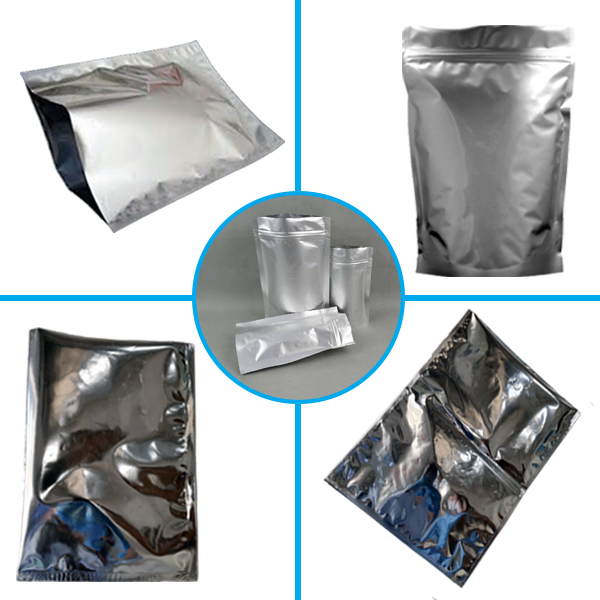Triple Laminated Packs
VA Pharma Pack is the noticeable company involved in the manufacture and supply of Triple Laminate for Packaging in India as well as Foreign. These 3 plies are suitable for packing of traditional products like confectionery, tea, consumables, final product specifications are made as per the agreement decided with the customers based on the packing products. Polyester foil and poly lamination from foil is done by dry lamination.
Features:
- ✓ Inner layer sealable by heat blades of bag -converting machine
- ✓Middle layer with superior barrier functions as per product packaging purposes
- ✓Superior gas barrier properties
- ✓Light proof finish
- ✓Moisture proof & vapor isolation properties
- ✓Bacteria restraint packaging
- ✓100% recyclable.
- ✓High strength.
- ✓Puncture resistance.
- ✓Tear resistance.
Applications:
- ✓ Pharmaceuticals and Bulk Drugs
- ✓ Food
- ✓ Heat sealable wrappers.
- ✓ Inner liner in carton boxes.
- ✓ Packaging of Pharmaceutical formulations
- ✓ Machinery Packaging
- ✓ Defense and Aerospace
- ✓ insulation
- ✓ Chemicals and Dyes
- ✓ Rubber Compounds, Polymer Granules etc.,
Product Description
We are Pioneer,Manufacturer/Supplier,Experienced and not trader
Size :
Small /medium/large/Extra large
Capacity :
Few Gms to few Kgs
Shape :
Three Side Sealed/Four side sealed Bulk pack/Protective Liner For FIBC.
Available in Polyster/Al foil 3,4 layer films.
Moisture Barrier/Sunlight barrier/Air Barrier/High Barrier/Water Vapour barrier/humidity/High performance/Sea/ocean worthy.
Composite Article of plastic/Al Foil/Recyable/Environment friendly.
Features
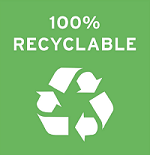
100% Recyclable

High Strength

Tear Resistance

Puncture Resistance

Bacteria Restraint
Packaging
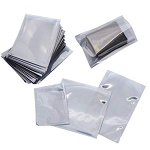
Inner Layer Sealable
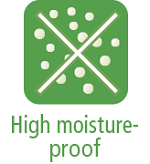
Moisture Proof
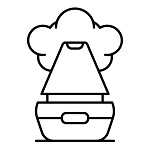
Vapor Isolation
Application

Pharmaceuticals and Bulk Drugs
A bulk drug — also called active pharmaceutical ingredient (API) is a chemical molecule in a pharmaceutical product. These ingredients need extremely careful protection during storage & transit. Any pack leakage & contamination can spoil ingredients & not only affect potency of medicine but also endanger health of human who consume the product made from such content.
In order to maintain hygiene & safety of the package, the laminate made using aluminium foil & special polymers aluminium barrier foil protects the product from all adverse external influences that may affect its quality and potency such as light, moisture, oxygen, biological contamination mechanical damage and counterfeiting/adulteration. Use of special polymer layer takes care of contents & prevents any migration through & from the system. Also offers good bond strength against action of aggressive ingredients.
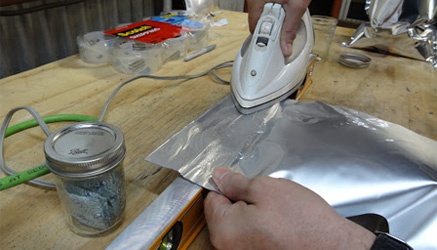
Heat Sealable Wrappers
A heat sealable retortable laminated foil capable of being heat sealed to itself or to a polypropylene substrate. The foil includes: an outer polymeric barrier layer an intermediate barrier layer; an inner polymeric barrier layer; and a heat sealable layer. Packages produced utilizing the laminate are suitable for the autoclave sterilization and subsequent storage of a contact lens and its attendant saline for a period of time in excess of 2 years. A heat seal are designed for both extrusion and solvent-based to a variety of substrates including paper, foils, and vacuum plastic compounds. Aluminium foil provide complete heat sealed wrap to product which prevents product from light, moisture, UV rays and bacteria. It uses to seal day to day objects and appliances from yogurt to soap wrapper by adapting the application parameter of pressure and heat in proportion to setting.
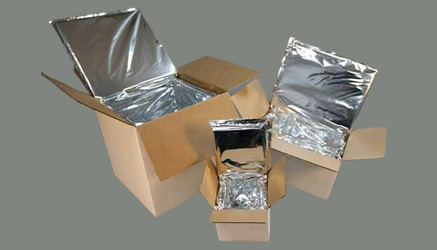
Inner Liner in Carton Boxes
Inner liner is an important material in laminates and has wide application in food packaging. Its barrier function against the moisture, oxygen, light, uv rays, bacteria, water vapour and other gases. Therefore, inner liner is used in the laminates when insufficient barrier properties are the limiting factor for shelf-life stability of food. The barrier properties of aluminum-coated plastic laminates, which can offer an alternative to inner liner laminates, are somewhat less efficient. The use of inner liner in rigid, semirigid and flexible for in-pack thermal allows the selection of package geometries that ensure rapid heating and minimum heat damage during processing. On the tightness of packages, the mechanical stability and quality of sealing is of particular importance. The use of aluminum in packaging is considered to be safe, and inner-coating of the foil is recommended in specific cases.
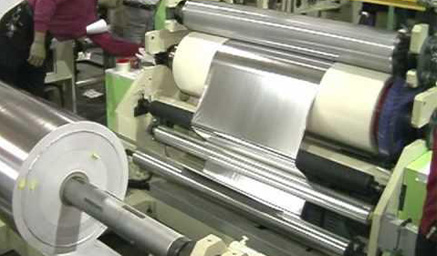
Machinery Packaging
Triple laminated bags multilayer aluminum foil bags with machine packaging. Aluminium foils are ideal for the safe, convenient and versatile packaging of pharmaceutical products foil in electrical capacitors provides compact storage for electric charges. If the foil surface is treated, the oxide coating works as an insulator. Aluminum foil widely use in packaging of machines as it protect machine from light, oxygen, UV rays, water vapour, moisture and bacteria.

Defense And Aerospace
Packaging made from aluminium barrier foil use in defense and aerospace. Aluminium barrier foil protects and preserves aerospace engines and spare parts from corrosion in an efficient way during storage and transport.
Due to aluminium barrier foils low water vapour transmission rate they protect products from moisture, oxygen ingress, UV rays, grease and many other corrosion-causing elements.
We are capable of manufacturing aluminium barrier packaging that will cover an entire aircraft, wings, engines and other aerospace equipment you need protecting.

Food
Aluminum foil is hygienic, non-toxic and helps in keeping the aroma of foods and provides a complete barrier to light, oxygen, ultraviolet radiation, moisture and bacteria. For this reason, foil is used extensively used to cover food. Foil does not melt from high temperature, nor does it lose its shape or impart any bad smell to the food wrapped in it. This means foil can be used for grilling food or even for cooking on an open fire.
For example, laminated foil with paper stuck on the inside is used for packaging fruits, vegetables and cheese. This kind of foil is three times as waterproof as standard foil even in hot climates: the paper absorbs moisture while the foil itself protects the contents against other negative elements.
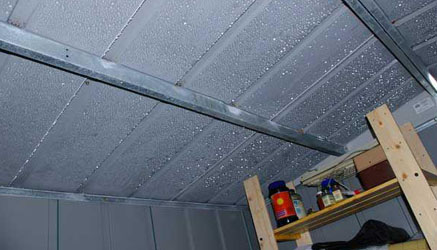
Insulation
Aluminum foil is 88 percent reflective and is widely used for thermal insulation heat exchanges and cable liners. Aluminium foil are widely used in building panels adding to the insulation performance of modern building systems. Aluminium foil is also used as a skin for heat-insulating and incombustible materials to provide high performance insulation for pipework and ducting. Aluminium foil controls surface temperatures for personal protection and comfort, facilitates process temperature control and controls noise. Aluminium foil also acts as an insulator against the magnetic and radio frequency emissions associated with electrical cables. As a sheath for fiber-optic cables, aluminium foil uses its electrical conductivity to act as a ‘tracer’ to enable testing of the integrity of cable links - as well as helping to provide the long term protection every cable needs.
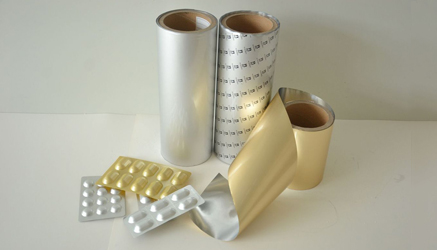
Packaging Of Pharmaceutical Formulations
The unrivalled barrier properties of aluminum foil makes it impenetrable to moisture, aromas, oxygen and other gases, as well as micro-organisms and light. Sensitive products are therefore kept in perfect condition for long periods aluminum foil has numerous properties which make it ideal for the safe, convenient and versatile packaging of pharmaceutical products such as tablets, powders and liquids.
1. HygienicAluminum foil is non-toxic and non-hazardous. It does not harbor or promote bacteria. It can be supplied in a totally sterile condition. Aluminum foil is also suitable for the application of tamper-evident seals and anti-counterfeiting security, such as holograms.
2. Sustainable and environmentally friendlyAluminum foil in pharmaceutical packaging has a very positive environmental profile – it saves weight, reduces transport and handling costs and affords complete protection to sensitive pack contents. Advanced separation techniques allow the aluminum foil in domestic waste to be recovered and recycled at a fraction of the original energy cost.
3. VersatilityIn the medical and personal care markets, aluminum foil is mainly used in push-through blisters as a high-barrier performance, sealable and breakable membrane. In cold-formed blisters or strip packs (e.g. For suppositories), aluminum’s excellent formability allows us to form the material into highly complex shapes without impairing its barrier integrity

Chemicals And Dyes
Innovative packaging materials made of environmentally friendly biodegradable polymers (polylactide and polyhydroxybutyrate) with the addition of natural colorants commonly used in the food industry.
Aluminium foil is used in hair dying as well as aluminum foil's function is also related to heat since it raise hair's temperature with the bleach in it to help to lighten the hair. The foil heats the hair, which opens its cuticle to the ammonia, which enters inside the hair, and that way, hair color can be change. It help to divide the hair and cover the hair to prevent chemical to reflect with light, UV rays and other elements.
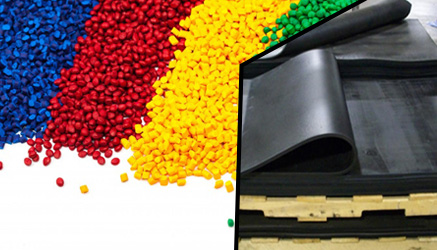
Rubber Compounds And Polymer Granules
Coextrusion can be used to manufacture bags or film having two or more layers where only the inside layer is heavily loaded with antiblock additives and the outside layer contains only a minimal amount of antiblock additives with both layers containing slip agents. The use of 1,2-SBD serves to eliminate the problems of incompatibility and disposal encountered in the prior art and provides film and bags having superior puncture and tear resistance when compared to a conventional material such as polyethylene
